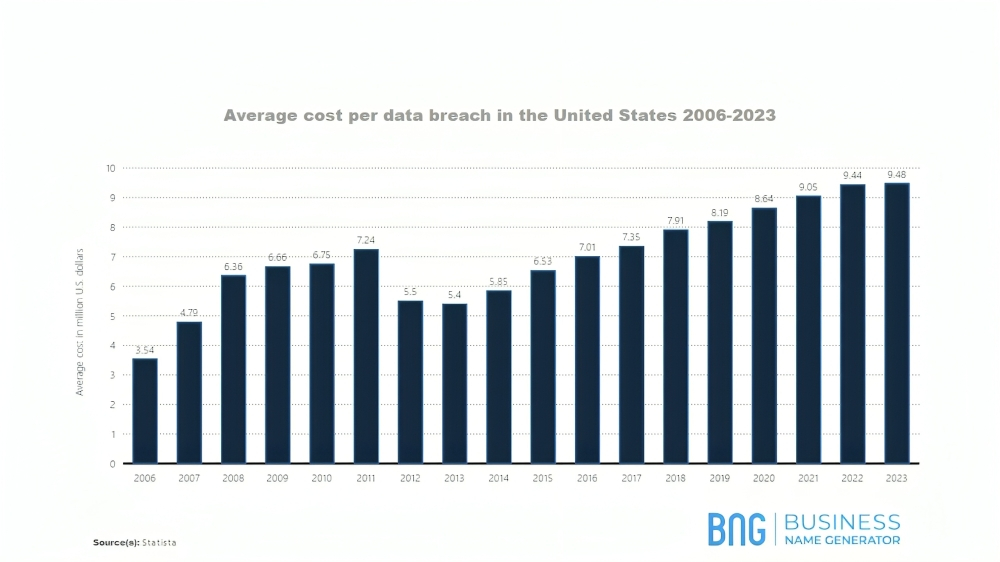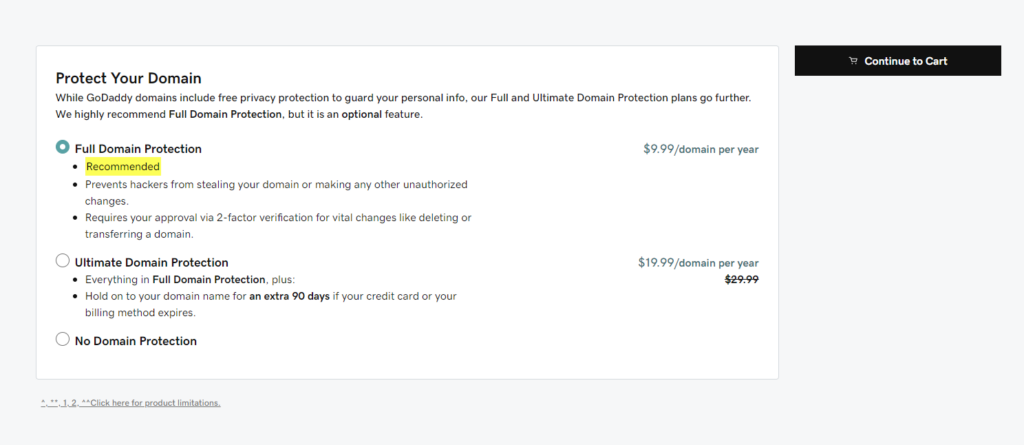The average cost of a data breach in 2023 amounted to $9.48 million in 2023. This makes data breaches and cyber attacks one of the costlier potential losses for a business.

As a business owner with an online presence, you need to make sure your domain name security is at the highest level. In this article, we’ll show you how to secure a domain name and explain why you need domain name ownership protection.
Secure a Domain Name
Securing a domain name is not a one-time event. There are many actions you can take, and you should always be on the lookout for new ways to achieve domain name security.
According to Astra, small and mid-sized businesses (SMBs) are targets for almost 43% of all cyber attacks. The same report claims that the cost of cybercrime aimed at SMBs will reach $10.5 trillion by 2025.
As a business owner, these numbers shouldn’t scare you away from owning a domain name, but they should alert you and showcase how important it is to boost your security.
Let’s go through some of the best practices for securing a domain name.
Best Ways to Secure a Domain Name
Choose a Reputable Domain Name Registrar
An established registrar guarantees stability and offers advanced security features. While they might be pricier, accredited registrars are more likely to keep your domain secure.
The Internet Corporation for Assigned Names and Numbers (ICANN) is in charge of accrediting registrars. If you don’t want to opt for a popular registrar like GoDaddy, Bluehost, or Hostinger, you can check out ICANN’s list of accredited registrars and start your search there.
Go All-In on Security Features
You might save a buck or two by not paying extra for domain protection, but you’ll expose yourself to risks that will end up costing much more. For example, GoDaddy offers full domain protection for $9.99 per year. With it, you can set up two-factor authentication and prevent others from making unauthorized changes.

You should also install an SSL certificate and keep your connections secure.
Assign Domain Ownership to the Business
Make sure to register a domain name with your company’s name rather than someone else’s. All you need is a disgruntled employee to claim ownership of the name if they are legal owners or representatives of the domain name.
Check out the information about your website in the domain name system (DNS) and see what is listed under contact information. Transfer usage rights to your corporate entity if needs be.
Check Registration Expiration Date
Most registrars offer the option to register your domain for a period of one to ten years. If you don’t renew your registration, the name becomes available to the public once again.
Domain hijacking is the practice of finding unwary registrants and taking over a name as soon as its registration period expires. You can prevent it by keeping an eye on your expiration date or choosing the auto-renewal option.
TIP:
When you receive an email about your domain name registration, make sure you double-check who you’re talking to. Cyberattacks often revolve around registrar impersonation to get sensitive information out of you and take over the name with your help.
Protect Yourself Against Cybersquatting
Cybersquatting is when someone registers a domain name that’s similar to yours but uses a different spelling or domain type. The goal of it is to confuse customers and make them click on a website thinking it’s you. From then on, hackers can spread malware, phishing, or set up a fake eCommerce store.
While there are acts that protect you from cybersquatters, prevention is the best medicine. You can register aliases, i.e., domain names with a different top-level domain to your main one. If you want to take a step further, consider trademarking your domain name.
Keep Your Domain Locked
If you want to transfer your domain name to another registrar, you need to go to your control panel settings and unlock it. If you’re not in the transferring process, there’s no reason to have your domain name unlocked and vulnerable to potential attacks.
Change Passwords
As always, security breaches can be as easy as learning someone’s password. According to the World Economic Forum, 95% of all cybersecurity issues are a result of a human error.
Make sure to use strong passwords and change them ever so often. Two-factor authentication might be an additional step that’s boring to do every time, but it’s a powerful tool that lets systems ensure you’re the one making changes to your website.
Add Backup Payment Details
Try adding multiple payment methods to your account settings on the registrar’s or hosting provider’s platform.
When it’s time to renew your subscription, your primary payment method may fail to pay up, and your registration can expire without you knowing. Having a secondary method available minimizes the risk of losing your name.
Domain Name Security: Potential Risks
If you fail to react on time and take precautionary measures, you’re leaving your website and domain name exposed to multiple risks. The most common threats to an unsecured domain name include:
- Transferring domains to an untrustworthy registrar,
- Changing DNS records,
- Changing the WHOIS contact information database,
- Hijacking expired domains,
- Breaching privacy,
- Losing control of the domain,
- Domain deletion.
Depending on the type of cybercrime (and its severity), you may or may not be able to open disputes about the ownership of the domain name and its recovery. These disputes take time and money to resolve, and it’s something you should avoid going into.
Takeaway Points
When it comes to securing a domain name, you need to stay vigilant and be wary of expiration dates and suspicious queries for sensitive information. Most registrars want to keep your domain name as safe as possible to ensure a reputable business. You can rely on their protection for the most part (provided you pay up).
Still, you need to take some extra steps if you want to avoid the potential security risks we all face online. If you haven’t already chosen a domain name you want to secure, you can use our AI-powered domain name generator to get 1,000+ catchy name ideas for free.